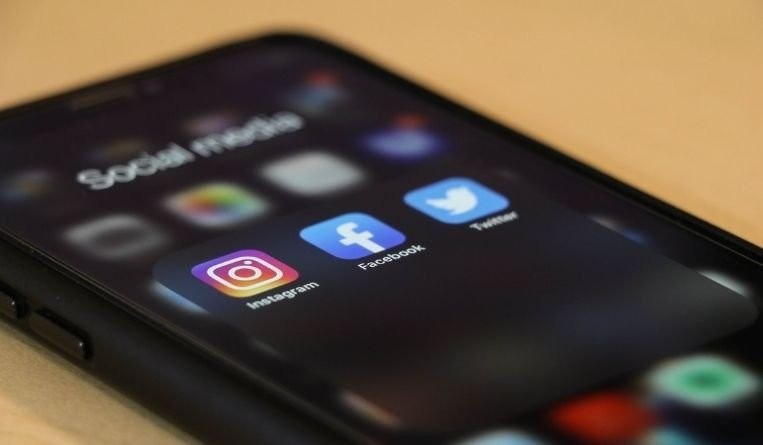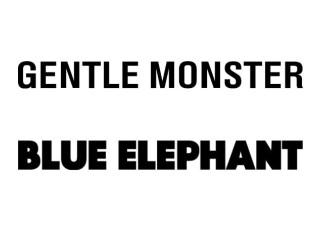Copyright implications of sharing photographs, videos and other content on social media
31 August 2020

The internet and associated technologies have revolutionized communication across the globe, making it possible to interact, publish and reach people at an unprecedented scale. Increased access to high-speed internet and the various platforms of communication now available through myriad devices such as smartphones, tablets, laptops and the like have made it possible to send and receive information, photographs, videos and documents swiftly, conveniently and across national boundaries; a phenomenon which was unanticipated even a few decades ago. This has led to the rise of social media platforms which connect people and also facilitate and promote sharing of content, which may also include literary works, photographs, videos, etc., over which copyright subsists. Millions of photographs and videos are uploaded on the servers of these social media platforms daily. These are then accessed, downloaded and shared by millions of internet users across the world, especially on platforms such as Facebook which, subject to privacy settings of the uploader, allow free sharing and re-sharing of content.
While the average social media user would find the act of sharing content, whether created by oneself or by someone else, rather innocuous, through a legal perspective, complex issues of rights, duties and liabilities arise. Unfortunately, awareness of such issues is low and judicial precedents are scarce, which has resulted in a degree of uncertainty regarding copyright implications of sharing content on social media. For instance, many believe that an image available on social media sites and the internet, like the various search results produced by Google Images, are free to be used. However, the reality is far from it, as many learn the hard way – much like a PR and content writing enterprise which had used a photograph of Omaha, Nebraska, retrieved from Google Images on a blog post and ended up paying US$8,000 for doing so, and another web content writing business which had used a photograph from the web and ended up paying US$4,000 – for a photo that retailed for US$10. Courts have also been awarding damages for such infringement.
Such claims are now common in countries like the United States, with laws prescribing significant statutory damages, where some have adopted copyright claims as a fruitful business model. Even in India, copyright holders have various remedies against infringement through social media platforms, including institution of civil and/or criminal proceedings, to protect economic as well as moral rights, or lodging complaints with the platforms as per their IP policy to ensure removal of infringing content. However, before one utilizes these remedies, a clear understanding of the implications of uploading content on social media is necessary, since this may play a vital role in determining the rights and liabilities of all parties concerned.
Ownership of copyright
In India, The Copyright Act, 1957 regulates the rights and liabilities of the owner/holder of the copyright over a work and those of the public. The owner of the copyright over any work has the exclusive right to, inter alia, use, distribute, publish or otherwise deal with the work, as well as the exclusive right to authorise any other person to perform any of the said actions. Therefore, only the owner of the copyright over a photograph or a video has the right to upload the same on any social media platform as this amounts to publication of the work.
Notably, the photographer and the producer are deemed to be the “author” of photographs and videos (which are considered to be cinematographs) respectively and are also the first owner of the copyright unless the same were created for valuable consideration at the instance of some other person, in which case such person is the first owner. Thus, for example, if someone takes a picture of you, such person will usually own the copyright over the photograph and may even file a suit for copyright infringement against you in case you publish the photograph, including on social media platforms.
The position of law is similar in most other countries, and, in recent years, there have been instances of celebrities, including Khloé Kardashian and Gigi Hadid, being sued by paparazzi and photograph agencies for having uploaded their own images on social media platforms. While in some jurisdictions a celebrity may claim personality rights to prevent the photographer from commercially appropriating the person’s likeness or the photograph, it is unlikely that the same will impact copyright ownership, which will continue in favour of the photographer.
However, content on social media platforms such as Twitter and Facebook, including photographs and videos, are regularly uploaded and shared by a multitude of users, mostly by persons who are not copyright owners. How far are these actions permitted under the law? The answer lies in the terms of service of such social media platforms.
Terms of service (TOS) of social media platforms
Role of TOS
Uploading content on social media platforms, especially ones on which copyright subsists, have far-reaching legal implications. One of the crucial determiners of the rights, duties and liabilities of various persons are the TOS of the platform in question. These terms are usually in form of browse-wrap agreements, i.e. agreements which the users impliedly agree to be bound by, merely by virtue of using the platform, in contrast to click-wrap agreements which usually require the user to convey their consent by clicking on an ‘I Agree’ button.
For instance, in the copyright dispute between Haitian photographer Daniel Morel and Agence France-Presse (AFP) and others, a lot hinged on whether Morel had, by uploading photographs of the aftermath of the Haiti earthquake of 2010 on Twitter, permitted others, including AFP, to use, reproduce and publish the said images. Notably, AFP and Getty Images had not only used the said images but had further distributed it to thousands of news outlets and other customers for monetary consideration.
The TOS of Twitter requires its users to only upload content if the copyright over it vests with the uploader or if the uploader is otherwise permitted under law to upload such content. Further, while the rights over the content continue to vest with the uploader, the act of uploading the content on Twitter is deemed to be a worldwide, non-exclusive, royalty-free and sub-licensable licence in favour of Twitter to use and deal with the content in any way, including by reproducing, adapting, modifying, publishing and distributing the same “in any and all media or distribution methods (now known or later developed).” Further, the TOS allows Twitter to make such content available to its partners for distribution, publication, etc.
On the basis of the above, AFP had argued that by uploading the photographs on Twitter, Morel had given a licence to have the photographs freely distributed within and outside Twitter, and that AFP was a third-party beneficiary to the said licensing agreement. However, the U.S. Court, on construction of Twitter’s TOS, found that AFP could not be considered a third-party beneficiary of the licence as it was not a partner of Twitter. It also held that Morel had not permitted the free distribution of his photographs, and any implied sub-licence under Twitter’s TOS was at best restricted to re-tweeting. Thus, AFP’s only real defence to Morel’s copyright infringement claim was struck down based on the construction of Twitter’s TOS.
The dispute proceeded to trial and, in November 2013, a jury found AFP and Getty Images liable for copyright infringement, awarding statutory damages to the tune of US$1.2 million for infringement of eight photographs owned by Morel, along with actual damages, infringing profits, and damages for DMCA violations. Morel elected to receive statutory damages, and the jury’s ruling was found not to be excessive by the United States District Court for the Southern District of New York through its decision dated August 13, 2014.
Scope of licences under TOS
A review of the IP policies, TOS and various other documents of some other major social media platforms such as Facebook and Instagram reveal that, much like Twitter, all these platforms broadly require a similar licence and stipulate that by uploading content incorporating copyrighted works on these platforms, the user represents that he has the right to upload, distribute and otherwise deal with the works as well as the authority to grant a licence, as stipulated by the TOS, over the work to the social media platform. Thus, it appears that while the ownership of copyright remains with the user uploading the works on the platforms, the owner cannot usually proceed against any other user who shares the said content or against any other person sub-licenced by the platform in question.
The terms of the license in favour of the social media platforms are broad and allow them to use and share the content on any platform and through any media, and authorise third-parties to do the same, without seeking any additional permission from, or providing compensation to, the right holder, even in case such work is commercially exploited.
Term of licences
It may also be noted that while the licence in favour of Instagram may be terminated by deleting the content or the uploader’s account with Instagram, the TOS states that the content may continue to appear if it was shared with other users who have not deleted it. According to the TOS of Facebook, however, even if the content is deleted from the platform by the right holder/first uploader, the license in favour of Facebook will subsist till all other users of the platform who may have shared the content delete the same; thus, potentially extending the term of the licence indefinitely, especially for viral photographs and videos which are shared by an enormous number of people across the globe. The TOS of Twitter goes even further and the licence over use of the uploaded content subsists in perpetuity even after termination of the user’s account with Twitter.
Conclusion
As is clear from the preceding sections of this article, uploading one’s original copyrighted works on social media platforms have far reaching consequences. Undoubtedly, most social media platforms take pains to assure every user that the ownership of copyright continues to vest on the user who uploads such works, and all the platform takes from them is a license. However, the width of this license itself is sufficient to allow the platforms to effectively commercialize the works, by themselves or through unitarily granting sub-licences to other persons, with no obligation to share commercial benefits with the original copyright owner.
Thus, once copyrighted content, such as photographs or videos, are uploaded on social media platforms, the right holder’s control over the distribution and exploitation of such works is significantly compromised and the broad licence in favour of the platform may extend for an indefinite period. In the meanwhile, the right holder can do little to prevent further distribution or even commercialisation of the works. Therefore, there is a need for copyright owners to carefully consider the implications of uploading their works on social media platforms before taking such a step.
Moreover, even if one does decide to upload their work on social media, it is imperative to curtail viewership and sharing rights through the platform’s own settings to reduce chances of free and uncontrolled distribution of the work. While this would not guarantee full control over the reproduction and distribution of the work, since people who may be allowed to view the content (such as ‘friends’ on Facebook) may still be able to download, take screenshots or in some other way reproduce and further share such works, but it can at least limit the chances of unknown individuals usurping the work and/or starting a cycle of sharing and re-sharing, which would be difficult to halt even by removing the original uploaded content from the platform.







